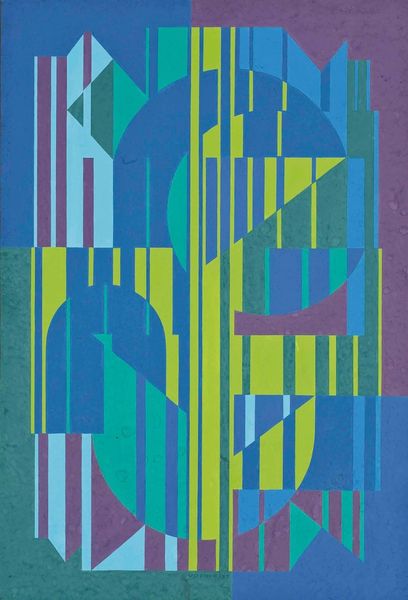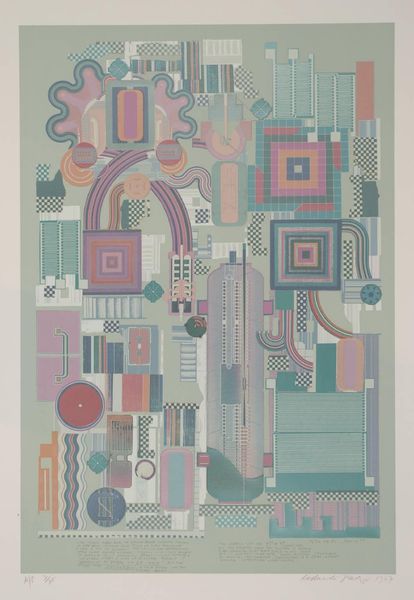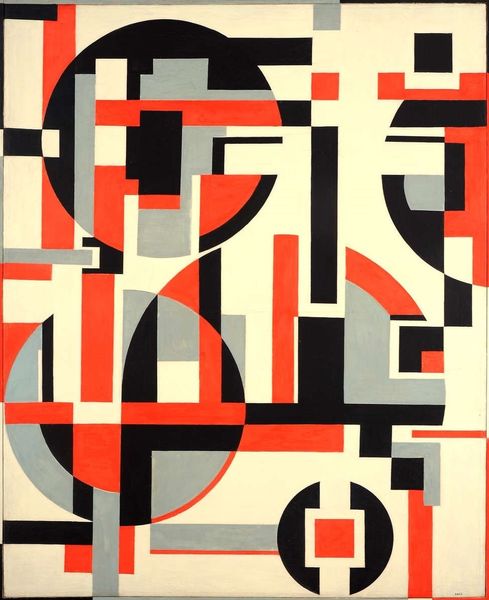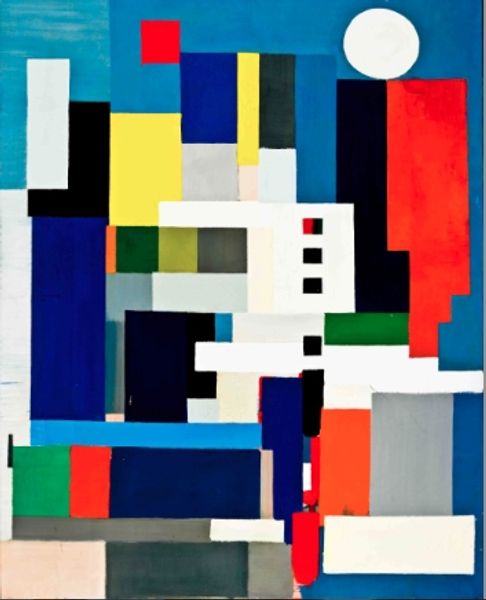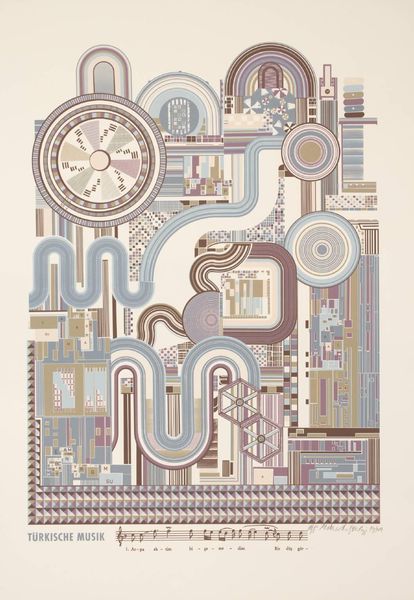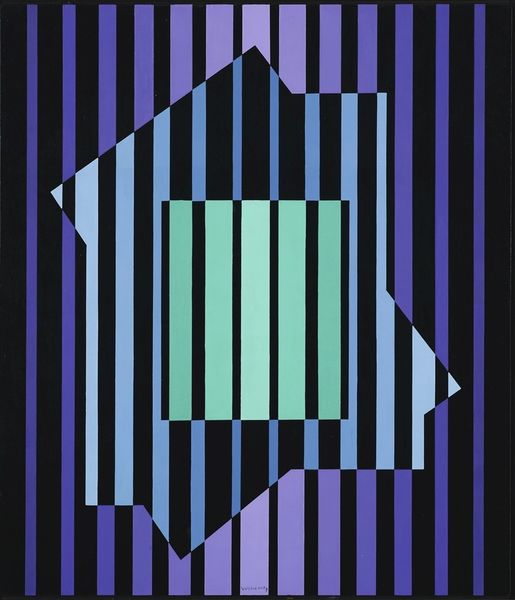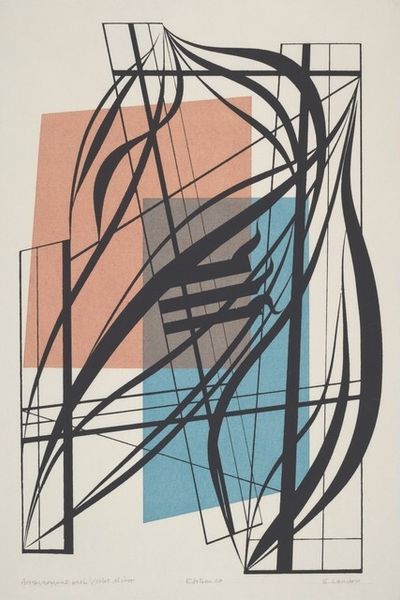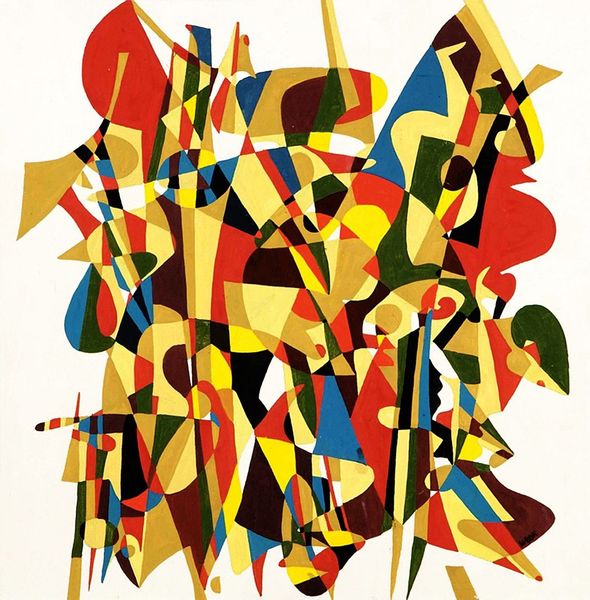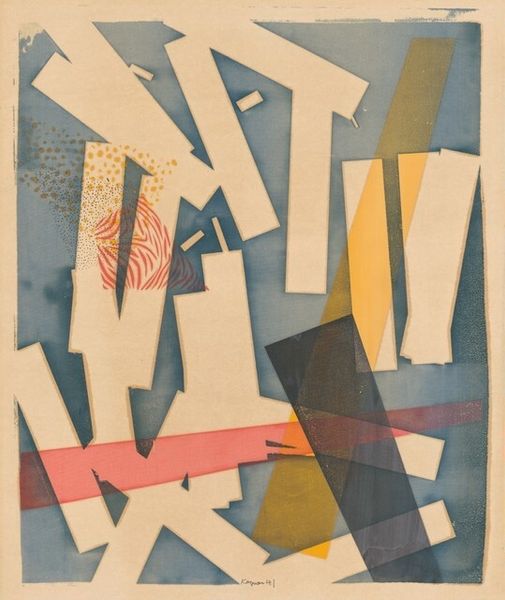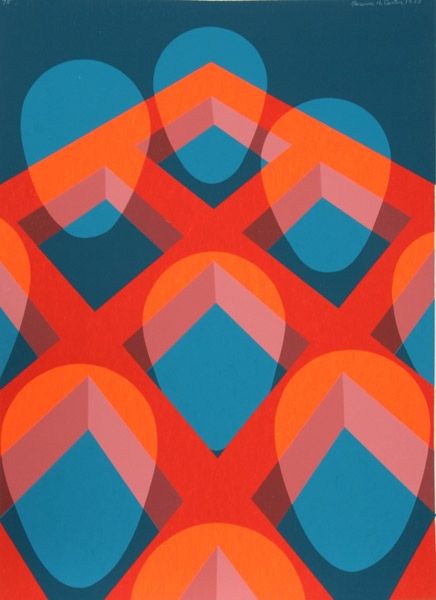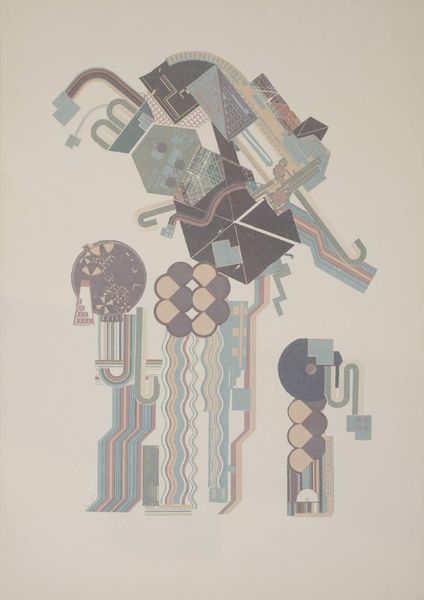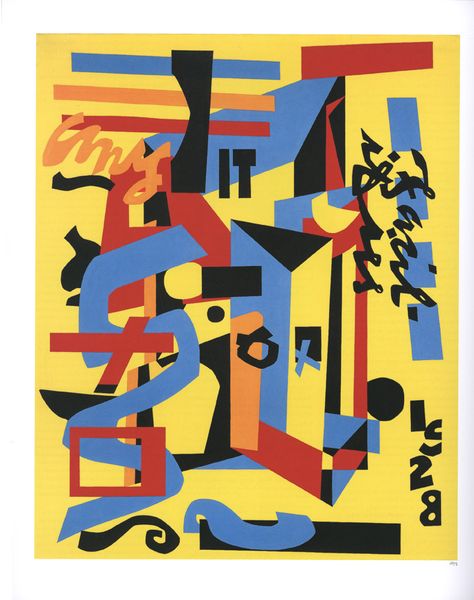
#
op-art
#
op art
#
geometric
#
abstraction
#
modernism
Copyright: Modern Artists: Artvee
Editor: So, here we have "Anadir II" by Victor Vasarely, created between 1976 and 1988. It's very striking with its use of geometric shapes and cool blue tones, kind of like a futuristic blueprint. What do you make of this work? Curator: I see a deliberate challenge to the traditional art establishment. Vasarely, a key figure in Op Art, sought to democratize art, believing it should be accessible to all, not just the elite. This piece, with its clean lines and reproducible geometric forms, speaks directly to that ethos. Editor: Democratize art? How so? Curator: Think about it: the simplified forms, the bold colors... it lends itself to mass production, to integration into architectural spaces. Op Art, as a movement, gained popularity through posters and graphic design. It wasn't confined to gallery walls. "Anadir II" embodies that impulse to break free from traditional constraints, engaging a wider audience in the visual experience. Don't you agree? Editor: I see what you mean. It's less about individual skill and more about the impact of the visual itself, accessible regardless of your background. Curator: Exactly. It shifts the focus from the artist's hand to the viewer's perception and the potential for mass distribution of art. The socio-political implications of making art affordable and widespread were very interesting. Editor: That definitely reframes my understanding. I initially just saw it as an aesthetic exploration of geometric form, but I understand the commentary about visual perception. Curator: It’s both. But always remember art's function is also about its role in public life. Editor: Thanks, this was incredibly insightful.
Comments
No comments
Be the first to comment and join the conversation on the ultimate creative platform.
